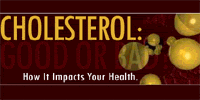
Introduction

Peroxisome Profilerator-Activated Receptors (PPARs) are nuclear hormone receptors that belong to the steroid/thyroid/retinoid superfamily of receptors (Keller et al. 2000). PPARs form heterodimers with the Retinoid-X Receptors (RXRs).
The PPAR/RXR dimer then binds to a peroxisome proliferators-response element (Staels and Fruchart 2005), a DNA-specific sequence of which many types exist. This binding activates a change in gene transcription.
There exist three different PPAR isoforms:
- alpha
- beta/delta
- gamma
...which, when activated, stimulate expression of genes involved in energy homeostasis, specifically the metabolism of glucose and fatty acids (Blaschke et al. 2006).
 |
||
 |
What Is Homeostasis? Homeostasis is the tendency of the body to seek and maintain a condition of balance or equilibrium within its internal environment, even when faced with external changes. A simple example of homeostasis is the body's ability to maintain an internal temperature around 98.6 degrees Fahrenheit, whatever the temperature outside. In other words, it's the ability of the body to maintain internal equilibrium by adjusting its physiological processes. The body tries not to have too much or too little of any important fluids, hormones, etc. |
 |
 |
||
These different isoforms vary in their affinity to ligands, distribution throughout the body, and cofactors proteins they bind to. Each isoform has distinct properties and actions when activated.
| RELATED ARTICLE | ||
|

PPAR-Alpha
PPAR-alpha is found in metabolically active tissues, the liver, adipocytes, skeletal muscle, the heart, and the kidneys, where it is involved in lipid metabolism, and in vascular endothelium, vascular smooth muscle, and macrophages.
 |
||
 |
What Is A Macrophage? Macrophages are cells found in the body that are responsible for the elimination of disease-causing germs (such as microorganisms, viruses, toxins, bacteria, and fungi), as well as dead cells and cellular debris. |
 |
 |
||
PPAR-alpha activation increases the expression of lipoprotein lipase and apolipoprotein A-V (apoA-V) while simultaneously decreasing expression of apoC-III in the liver, which decreases VLDL particles and lowering plasma triglycerides in chylomicrons (Staels and Fruchart 2005).
 |
||
 |
What Are Lipases And Triglycerides? A lipase is an enzyme that helps break down fats into glycerol and fatty acids that can then be absorbed into the bloodstream. Triglycerides are the main components of vegetable oil and animal fats, and form much of the fat stored by the human body. They consist of glycerin (a sweet, syrupy liquid) plus 3 individual fatty acids all mixed together. Triglycerides play an important role in metabolism as energy sources. They contain twice as much energy (8 kcal/g) as carbohydrates. In the human body, high levels of triglycerides in the bloodstream, however, have been linked to atherosclerosis, pancreatitis, and, by extension, the risk of heart disease and stroke. Cardiovascular exercise and low-moderate carbohydrate diets containing essential fatty acids are recommended for reducing triglyceride levels. When these fail, statin drugs are often used to reduce triglyceride levels. |
 |
 |
||
These changes liberate fatty acids, allowing them to either be oxidized or stored. This suggests that use of a PPAR-alpha agonist may be beneficial in aiding fat loss.
In addition to the change in plasma fatty acid levels, hepatic apoA-I andapoA-II are increased by PPAR-alpha activation, which improves cholesterol levels by increasing HDL levels (Chinetti et al. 2001).

PPAR-Beta/Delta
The exact actions of PPARbeta/delta are still being researched, though in obese animals it appears to decrease adiposity. Some feel that PPARbeta/delta may serve as a "back-up" to PPARalpha or have more specific actions in skeletal muscle than PPARalpha does (Tenenbaum et al. 2005).

PPAR-Gamma
PPARgamma is found primarily in adipocytes, vascular endothelium, vascular smooth muscle, and macrophages, but also in smaller number in skeletal muscle and the heart (Staels and Fruchart 2005). It is involved in the storage of fatty acids and is activated by leukotrienes, prostaglandins, and fatty acids.
 |
||
 |
What Are Prostaglandins? Prostaglandins are hormone-like compounds produced in body tissue that help control blood pressure, smooth muscle activity, inflammation, glandular secretion, calcium movement, hormone regulation, and cell growth control. Prostaglandins also control the substances involved in the transmission of nerve impulses, participate in the body's defenses against infection, and regulate the rate of metabolism. |
 |
 |
||
 Activation of PPAR-gamma can either increase or decrease the transcription of genes and enzymes involved in insulin sensitivity and adipogenesis, adipocyte differentiation, cell proliferation, and the inflammatory process (Kodera et al. 2000).
Activation of PPAR-gamma can either increase or decrease the transcription of genes and enzymes involved in insulin sensitivity and adipogenesis, adipocyte differentiation, cell proliferation, and the inflammatory process (Kodera et al. 2000).
All of these play a role in obesity and metabolic syndrome X (abdominal obesity, insulin resistance, and elevated blood pressure).
Obesity and insulin resistance lead to elevated plasma fatty acid levels. Activation of PPAR-gamma increases fatty acid storage, therefore obesity and insulin resistance suppress PPAR-gamma activation (Guo and Tabrizchi 2005).
Activation of PPAR-gamma should decrease insulin resistance. The anti-diabetic drug thiazolidinediones has been used to treat type-2 diabetes, though possible hepatoxicity and congestive heart failure due to use of this drug has limited its use (Guo and Tabrizchi 2005).

Pharmaceutical Drugs Targeting PPAR Fibrates & Cholesterol Levels
Fibrates, fibric acid derivatives, are cholesterol-lowering drugs that work by decreasing the amount of circulating plasma cholesterol and triglycerides. Most fibrates also increase HDL levels. The potential side effects of fibrates have limited their use, but they have been shown to be successful in controlling cholesterol levels.
| RELATED ARTICLE | ||
|
Two fibrates will be examined here:
- benafibrate
- gemfibrozil
 Bezafibrate
Bezafibrate
Bezafibrate is primarily a PPAR-alpha agonist, but also has some interaction with PPAR-beta (Peters et al 2003). The two studies most commonly referenced to with regards to Bezafibrate are The Bezafibrate Coronary Atherosclerosis Intervention Trial (BECAIT) study (de Faire et al. 1996) and The Bezafibrate Infarction Prevention (BIP) study (The BIP Study Group 2000).
The BECAIT study was a 5-year, double-blind, placebo-controlled study that gave young (less than 45 years of age) post-myocardial infarction patients either 200 mg Bezafibrate three times a day or a placebo.
The intervention of bezafibrate was shown to decrease plasma fibrinogen (involved in blood clotting) levels, reduce plasma cholesterol and triglyceride levels, and increase HDL levels, all of which worked to stop or reverse atherosclerosis progression.
| RELATED ARTICLE | ||
|
The BIP study was a double-blind study in which 3090 previous myocardial infarction patients were given 400 mg of bezafibrate a day or placebo. Patients were followed for 6.2 years. Results showed that bezafibrate treatment reduced plasma triglycerides by 21% and increased HDL levels by 18%. The study concluded that bezafibrate treatment was a safe and effective way to reduce plasma triglyceride levels and increase HDL levels.
 Gemfibrozil
Gemfibrozil
Like bezafibrate, gemfibrozil has been shown to decrease cholesterol and plasma triglyceride levels while increasing HDL levels. The Helsinki Heart Study (HHS) (Frick et al 1987), a double-blind, five-year study, examined the ability of gemfibrozil to reduce the incidence of coronary heart disease (CHD) in 4081 asymptomatic men aged 40-55.
Half of the men were given 600mg gemfibrozil two times a day and the other half were given a placebo. Gemfibrozil reduced the risk of CHD by 34% in the experimental group by decreasing cholesterol, plasma triglycerides, and LDL levels while increasing HDL levels. The Veterans Affairs High-Density Cholesterol Intervention Trail (VA-HIT) found similar results (Rubins et al. 2000).
Because of fibrates' effectiveness in treating dyslipidemia and CHD by increasing HDL levels, their use has been combined with the use of statins, drugs that decrease LDL levels by interrupting cholesterol formation. Statins, if not eliminated, can be myotoxic. Use of gemfibrozil with statins increases the risk of myotoxicity due to inhibition statin elimination (Staels and Fruchart 2005). Therefore, the combination is not recommended.

Insulin Resistance & Type II Diabetes
Type II diabetes usually results from obesity or inactivity, specifically though, visceral obesity. Normally, insulin has an antilipolytic effect on fat cells, though some fat cells seem to be "dysfunctional" in that they do not respond to insulin.
These dysfunctional fat cells release fatty acids even in the presence on insulin, leading to elevated plasma free fatty acid (FFA) levels, which then results in insulin resistance in the liver and skeletal muscle.
| RELATED ARTICLE | ||
|
In addition to this, these fat cells over-secrete the cytokines interleukin-6 (IL-6), resistin, and tumor necrosis factor-alpha (TNF-alpha) and under-secrete adiponectin (an insulin-sensitizing cytokine), all of which contribute to the further progression of insulin resistance, atherosclerosis, and inflammation.

Thiazolidinediones & Insulin Sensitivity
PPAR-gamma activation results in FFA uptake and storage in subcutaneous adipose tissue over visceral adipose tissue (Staels and Fruchart 2005). Decreasing plasma FFA levels will reduce insulin resistance.
In addition to decreasing plasma FFA levels, PPAR-gamma activation has been also shown to increase GLUT-1 and GLUT-4 receptors on skeletal muscle and the liver in rats (Kramer et al. 2001), increase adiponectin secretion (Maeda et al. 2001) and decrease TNF-alpha secretion (Cabrero et al 2002), resulting in decreased blood glucose levels. Two thiazolidinediones will be examined here:
- troglitazone
- pioglitazone.
 Troglitazone
Troglitazone
The Troglitazone Study Group (Kumar et al. 1996), a double-blind, placebo controlled study, examined the effects of troglitazone dosages ranging from 200mg-800mg twice a day in 330 patients. The study found troglitazone to decrease plasma fatty acid levels, fasting plasma glucose, triglycerides, and fasting plasma insulin levels in type 2 diabetics, resulting in increased insulin sensitivity.
The PPAR-gamma agonist troglitazone has been shown to be effective in treating type-2 diabetes and insulin resistance, but it has been removed from the market due to cases of hepatotoxicity (Staels and Fruchart 2005).
 Pioglitazone
Pioglitazone
Pioglitazone has been shown to result in similar changes in fasting plasma FFA, triglycerides, and fasting plasma glucose levels as troglitazone, except pioglitazone caused these changes without affecting fasting or glucose-stimulated insulin levels (Miyazaki et al. 2001).
Miyazaki et al. (2001) concluded these results were due to pioglitazone decreasing the fat content of the liver. Pioglitazone has also been shown to increase HDL levels in patients with type-2 diabetes and dyslipidemia (Goldberg et al. 2005).

Natural Dietary Supplements Targeting PPAR (Lignans & Fatty Acids)
Due to the potential side effects associated with the current pharmaceutical drugs that target PPAR receptors, safe alternatives are being searched for. New research is being done with various lignans and fatty acids to measure their ability to activate the PPAR receptors.
 Sesamin
Sesamin
Sesamin is a naturally occurring lignan found in sesame seeds and oil. A lignan is a molecule that combines with a receptor or another entity acting as an "activator."
Sesamin has been shown to be a potent PPAR-alpha agonist (Ide et al. 2003). The majority of sesamin research has been done on rats, but the results are very promising for use of sesamin to treat type-2 diabetes and obesity.
Fat can be oxidized in the mitochondria and the peroxisomes of cells, the majority of this oxidation occurring in skeletal muscle cells and the liver.
 |
Mitochondria & Peroxisomes Two major organelles of the human cell. Two major organelles of the human cell. Mitochonidria: The spherical or elongated organelles in the cytoplasm of nearly all eukaryotic cells, containing genetic material and many enzymes important for cell metabolism, including those responsible for the conversion of food to usable energy. Also called chondriosome. Peroxisomes: These function to rid the cell of toxic substances, such as hydrogen peroxide, or other metabolites and contain enzymes concerned with oxygen utilization such as D-amino acid oxidase and urease oxidase. Peroxisomes were discovered by Christian de Duve in 1965. |
 |
 |
||
PPARalpha activation by sesamin increases fat oxidation in mitochondria and peroxisomes by increasing the expression of enzymes involved in beta-oxidation of fatty acids (Sirato-Yasumoto et al. 2001).
Of vital important, sesamin increases the expression of the mitochondrial enzyme carnitine palmitoyl transferase (CPT) (Sirato-Yasumoto et al. 2001). CPT, the rate-limiting enzyme in beta-oxidation of fatty acids in skeletal muscle and liver cell mitochondria, is found on the outer membrane of mitochondria and carries fatty acids across the membrane into the mitochondria by binding to them.
 To View Top-Selling Sesamin Products, Click Here.
To View Top-Selling Sesamin Products, Click Here.
Increasing the expression of CPT will allow more fatty acids to be transported into the mitochondria where they can be oxidized. In addition to increasing the oxidation of fat, sesamin supplementation has also been shown to decrease lipogenesis by decreasing lipogenic enzymes in the liver.
Sesamin has been shown to decrease the gene expression of sterol regulatory element binding protein-1 (SREBP-1), acetyl-CoA carboxylase, and fatty acid synthase, among other lipogenic enzymes (Ide et al 2001), which means less fat is esterifized in the liver and therefore less fat is stored in adipose tissue.
 TetradecylThioacetic Acid (TTA)
TetradecylThioacetic Acid (TTA)
TetradecylThioacetic Acid (TTA), a non beta-oxidizable fatty acid analog, has been shown to activate all three of the PPAR receptors in rats, in the ranking order of Alpha > Beta/Delta > Gamma (Madsen et al. 2002).
TTA has been shown to increase insulin sensitivity by increasing hepatic fat oxidation and ketogenesis while draining fatty acids from the blood and extrahepatic tissues. This drainage of fatty acids by the liver increases the ability of adipocytes and skeletal muscle in uptake glucose (Grav et al. 2003).
TTA has been shown to cause mitochondrial and peroxisomal proliferation in rats (Kryvi et al. 1990), leading to increased beta-oxidation of fatty acids in the liver, along with increasing uncoupling protein-2 (UCP-2) expression (Grav et al. 2003). UCP-2, and UCP-3, is involved in preventing the accumulation of oxygen-specific free radicals and in regulating lipogenesis and ketogenesis.
UCP-2 is found throughout the body (Grav et al. 2003). These three adaptations, increased mitochondria, peroxisomes, and UCP-2 concentrations, all aid in increasing insulin sensitivity and reducing adiposity.
 Conjugated Linoleic Acid (CLA)
Conjugated Linoleic Acid (CLA)
Conjugated Linoleic Acid (CLA) is a mix of isomers of linoleic acid (commercially sold as a 50:50 mix of cis-9, trans-11 and trans-10, cis-12 isomers). Studies done on humans have shown decreased body fat and/or increased lean mass (though results are mixed). CLA is believed to influence body composition through regulation of lipid metabolism.
Studies have shown CLA to inhibit transcription of enzymes involved in de novo fatty acid synthesis/lipogenesis, desaturation of fatty acids, and triglyceride synthesis (Larsen et al. 2003). It is believed that CLA is a PPARgamma antagonist, resulting in the attenuation of fat cell differentiation.
 To View Top-Selling CLA Products, Click Here.
To View Top-Selling CLA Products, Click Here.
In mice, CLA supplementation has been shown to decrease adipocyte number and size as well as cause apoptosis (cell death) of adipocytes (Larsen et al. 2003) and researchers believe CLA to have similar properties in humans.
A one-year study, double-blind, placebo-controlled study, was conducted on 180 male and female volunteers with a body mass index (BMI) of 25-30 (Gaullier et al. 2004).
| » BODY MASS INDEX CALCULATOR |
Subjects were randomly assigned to receive CLA (free-form), CLA (triacylglycerol), or olive oil (placebo). Those receiving CLA received 3.4 grams per day. At the end of the study, body fat mass of the CLA-free-form group averaged 6.9% lower than the placebo group and had a 1.8% greater increase in lean mass.
The CLA-triacylglcerol group had a body fat mass that averaged 8.7% lower than the placebo group. All of these changes were not due to dietary or exercise intervention (Gaullier et al. 2004).
 Oleoylethanolamide (OEA)
Oleoylethanolamide (OEA)
Oleoylethanolamide (OEA) is an endogenous lipid being investigated as a potential anti-obesity drug. OEA is synthesized in the intestines. Its synthesis is increased with food intake and decreased with fasting.
 |
||
 |
What Does Endogenous Mean? Endogenous refers to something which originates internally, or is synthesized inside the body, tissues, and/or cells. |
 |
 |
||
OEA has been shown to have anorexic properties, meaning it decreases food intake. A study done on rats showed that OEA's ability to decrease appetite did not change plasma levels of various intestinal hormones involved in satiety, such as ghrelin and CCK, showing OEA works independently of these hormones (Proulx et al. 2005).
| RELATED ARTICLE | ||
|
OEA is also an activator of the PPAR receptor (Fu et al. 2005). Activation of PPARalpha by OEA will cause an increase in fat oxidation along with a decrease in fat storage, as described in the above sections. OEA's ability to decrease appetite and regulate body weight is accomplished by the activation of PPARalpha (Fu et al. 2003).
 Stearoylethanolamide (SEA)
Stearoylethanolamide (SEA)
Stearoylethanolamide (SEA) has been shown to decrease food intake independent of PPAR and without changing hematochemical parameters such as glucose and triglyceride levels or leptin (a hormone involved with satiety) expression (Terrazzino et al. 2004).
The appetite decreasing effect of SEA was associated with a reduction in liver stearoyl-CoA desaturase-1 (SCD-1) mRNA expression. SCD-1 is the rate-limiting enzyme in the biosynthesis of monounsaturated fats and its reduction is believed to lead to increased fatty acid oxidation and decreased lipogenesis in skeletal muscle and the liver (Dobrzyn et al. 2005).

Future Research
The potential to use PPAR agonist in the treatment of obesity, diabetes, atherosclerosis, and other diseases is very strong.
Currently, human research is being done on synthesized pharmaceutical drugs, which while are affective in treating insulin resistance and elevated plasma triglycerides carry side effects with them. Like all pharmaceutical drugs, the costs versus benefits must be examined.
The new wave of fatty acids and lignans that have been shown to be PPAR agonist are only in the beginning of their being studying. Few human studies have been competed on the above mentioned substances, with the exception of CLA.
 The in vitro and rat data looks very promising for humans though. Much more research needs to be done on these compounds in humans to examine their beneficial effects and possibility of side effects.
The in vitro and rat data looks very promising for humans though. Much more research needs to be done on these compounds in humans to examine their beneficial effects and possibility of side effects.
With obesity and type II diabetes becoming more and more prevalent, PPAR agonist should become the next hot topic in human research.
While the ideal way to treat and prevent these conditions from occurring is consistent diet and exercise, the average American suffering from these diseases is sedentary and not willing to put forth the effort needed to make lifestyle changes to correct the diseases.
With this in mind, PPAR agonist may be the answer for them.
References:
- Blaschke F, Takata Y, Caglayan E, Law RE, Hsueh WA. Obesity, peroxisome proliferator-activated receptor, and atherosclerosis in type 2 diabetes. Arterioscler Thromb Vasc Biol. 2006 Jan;26(1):28-40. Epub 2005 Oct 20. Review.
- Cabrero A, Laguna JC, Vazquez M: Peroxisome proliferator-activated receptors and the control of inflammation. Curr Drug Targets Inflamm Allergy1 :243 -248,2002
- Chinetti G, Lestavel S, Bocher V, Remaley AT, Neve B, Torra IP, Teissier E, Minnich A, Jaye M, Duverger N, Brewer HB, Fruchart JC, Clavey V, Staels B: PPAR-alpha and PPAR-gamma activators induce cholesterol removal from human macrophage foam cells through stimulation of the ABCA1 pathway. Nat Med7 :53 -58,2001
- de Faire U, Ericsson CG, Grip L, Nilsson J, Svane B, Hamsten A: Secondary preventive potential of lipid-lowering drugs: the Bezafibrate Coronary Atherosclerosis Intervention Trial (BECAIT). Eur Heart J17 :37 -42,1996
- Dobrzyn A, Ntambi JM The role of stearoyl-CoA desaturase in the control of metabolism. Prostaglandins Leukot Essent Fatty Acids. 2005 Jul;73(1):35-41.
- Frick MH, Elo O, Haapa K, Heinonen OP, Heinsalmi P, Helo P, Huttunen JK, Kaitaniemi P, Koskinen P, Manninen V: Helsinki Heart Study: primary-prevention trial with gemfibrozil in middle-aged men with dyslipidemia: safety of treatment, changes in risk factors, and incidence of coronary heart disease. N Engl J Med317 :1237 -1245,1987
- Fu, J., et al. Oleylethanolamine regulates feeding and body weight through activation of the nuclear receptor PPAR-?. Nature 425, 90-93 (2003)
- Fu J, Oveisi F, Gaetani S, Lin E, Piomelli D. Oleoylethanolamide, an endogenous PPAR-alpha agonist, lowers body weight and hyperlipidemia in obese rats. Neuropharmacology. 2005 Jun;48(8):1147-53.
- Goldberg RB, Kendall DM, Deeg MA, Buse JB, Zagar AJ, Pinaire JA, Tan MH, Khan MA, Perez AT, Jacober SJ, the GLAI Study Investigators: A comparison of lipid and glycemic effects of pioglitazone and rosiglitazone in patients with type 2 diabetes and dyslipidemia. Diabetes Care28 :1547 -1554,2005
- Grav HJ, Tronstad KJ, Gudbrandsen OA, Berge K, Fladmark KE, Martinsen TC, Waldum H, Wergedahl H, Berge RK. Changed energy state and increased mitochondrial beta-oxidation rate in liver of rats associated with lowered proton electrochemical potential and stimulated uncoupling protein 2 (UCP-2) expression: evidence for peroxisome proliferator-activated receptor-alpha independent induction of UCP-2 expression. J Biol Chem. 2003 Aug 15;278(33):30525-33. Epub 2003 May 19.
- Gaullier JM, Halse J, Hoye K, Kristiansen K, Fagertun H, Vik H, Gudmundsen O.Conjugated linoleic acid supplementation for 1 y reduces body fat mass in healthy overweight humans. Am J Clin Nutr. 2004 Jun;79(6):1118-25.
- Guo L, Tabrizchi R. Peroxisome proliferator-activated receptor gamma as a drug target in the pathogenesis of insulin resistance. Pharmacol Ther. 2005 Nov 20
- Ide T., et al. 2001. Sesamin, a sesame lignan, decreases fatty acid synthesis in rat liver accompanying the down-regulation of sterol regulatory element binding protein-1. Biochim Biophys Acta. Nov 30;1534(1):1-13.
- Ide T., et al. 2003. Sesamin, a Sesame Lignan, as a Potent Lipid-Lowering Food Component. JARQ 37 (3), 151 - 158.
- Larsen TM, Toubro S, Astrup A.Efficacy and safety of dietary supplements containing CLA for the treatment of obesity: evidence from animal and human studies. J Lipid Res. 2003 Dec;44(12):2234-41. Epub 2003 Aug 16. Review.
- Keller JM, Collet P, Bianchi A, Huin C, Bouillaud-Kremarik P, Becuwe P, Schohn H, Domenjoud L, Dauca M. Implications of peroxisome proliferator-activated receptors (PPARS) in development, cell life status and disease. Int J Dev Biol. 2000 Aug;44(5):429-42. Review.
- Kodera, Y., Takeyama, K., Murayama, A., Suzawa, M., Masuhiro ,Y. and Kato, S. (2000) Ligand type-specific interactions of peroxisome proliferator-activated receptor with transcriptional coactivators. J. Biol. Chem.,275, 33201-33204
- Kramer D, Shapiro R, Adler A, Bush E, Rondinone CM: Insulin-sensitizing effect of rosiglitazone (BRL-49653) by regulation of glucose transporters in muscle and fat of Zucker rats. Metabolism50 :1294 -1300,2001
- Kryvi H, Aarsland A, Berge RK. Morphologic effects of sulfur-substituted fatty acids on rat hepatocytes with special reference to proliferation of peroxisomes and mitochondria. J Struct Biol. 1990 May;103(3):257-65.
- Kumar S, Boulton AJ, Beck-Nielsen H, Berthezene F, Muggeo M, Persson B, Spinas GA, Donoghue S, Lettis S, Stewart-Long P: Troglitazone, an insulin action enhancer, improves metabolic control in NIDDM patients: Troglitazone Study Group. Diabetologia39 :701 -709,1996
- Madsen L, et al. Tetradecylthioacetic acid prevents high fat diet induced adiposity and insulin resistance. J Lipid Res. 2002 May;43(5):742-50.
- Maeda N, Takahashi M, Funahashi T, Kihara S, Nishizawa H, Kishida K, Nagaretani H, Matsuda M, Komuro R, Ouchi N, Kuriyama H, Hotta K, Nakamura T, Shimomura I, Matsuzawa Y: PPAR-gamma ligands increase expression and plasma concentrations of adiponectin, an adipose-derived protein. Diabetes50 :2094 -2099,2001
- Miyazaki Y, Mahankali A, Matsuda M, Glass L, Mahankali S, Ferrannini E, Cusi K, Mandarino L, DeFronzo RA: Improved glycemic control and enhanced insulin sensitivity in type 2 diabetic subjects treated with pioglitazone. Diabetes Care24 :710 -719,2001
- Peters JM, Aoyama T, Burns AM, Gonzalez FJ: Bezafibrate is a dual ligand for PPARalpha and PPARbeta: studies using null mice. Biochim Biophys Acta1632 :80 -89,2003
- Proulx K, Cota D, Castaneda TR, Tschop MH, D'Alessio DA, Tso P, Woods SC, Seeley RJ. Mechanisms of oleoylethanolamide-induced changes in feeding behavior and motor activity. Am J Physiol Regul Integr Comp Physiol. 2005 Sep;289(3):R729-37.
- Rubins HB, Robins SJ, Collins D, Fye CL, Anderson JW, Elam MB, Faas FH, Linares E, Schaefer EJ, Schectman G, Wilt TJ, Wittes J: Gemfibrozil for the secondary prevention of coronary heart disease in men with low levels of high-density lipoprotein cholesterol: Veterans Affairs High-Density Lipoprotein Cholesterol Intervention Trial Study Group. N Engl J Med341 :410 -418,1999
- Sirato-Yasumoto S, Katsuta M, Okuyama Y, et al. Effect of sesame seeds rich in sesamin and sesamolin on fatty acid oxidation in rat liver. J Agric Food Chem 2001 May;49(5):2647-51.
- Tenenbaum A, Motro M, Fisman EZ. Dual and pan-peroxisome proliferator-activated receptors (PPAR) co-agonism: the bezafibrate lessons. Cardiovasc Diabetol. 2005 Sep 16;4:14.
- Terrazzino S, Berto F, Dalle Carbonare M, Fabris M, Guiotto A, Bernardini D, Leon A. Stearoylethanolamide exerts anorexic effects in mice via down-regulation of liver stearoyl-coenzyme A desaturase-1 mRNA expression. FASEB J. 2004 Oct;18(13):1580-2. Epub 2004 Aug 2.
- The BIP Study Group: Secondary prevention by raising HDL cholesterol and reducing triglycerides in patients with coronary artery disease: the Bezafibrate Infarction Prevention (BIP) study. Circulation102 :21 -27,2000





